





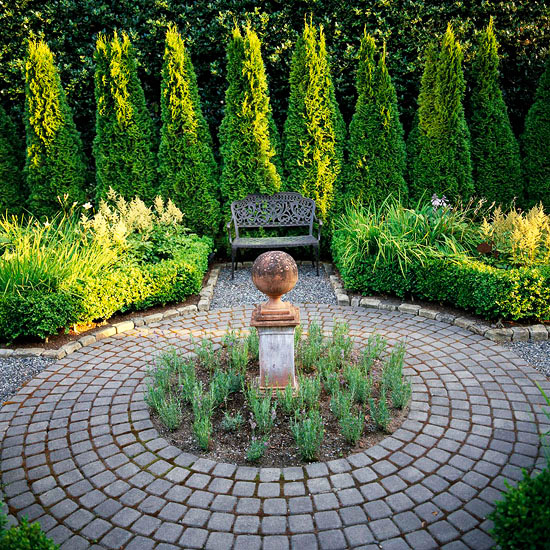
A hedge is more than plants standing in a row. Hedges mark property lines, line walkways, improve privacy, and highlight a garden focal point or even become the focal point. A hedgerow provides an ideal habitat for birds.
continue reading below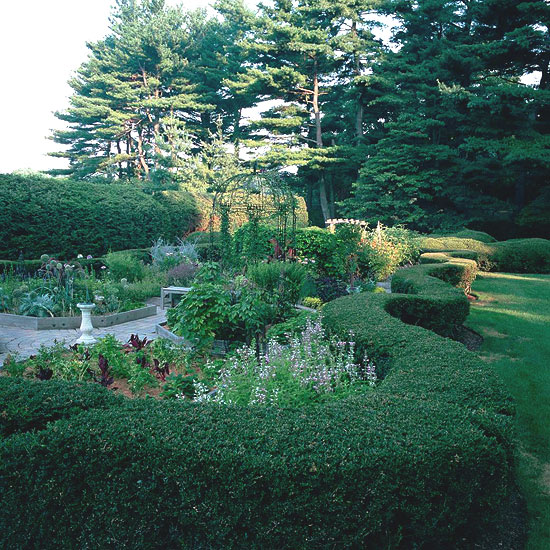
Choose hearty, pest- and disease-resistant plants that suit your climate and garden conditions. Wise plant choices make a healthy hedge that's easy to maintain. Slow- and moderate-growing plants are best; fast growers mean more frequent upkeep. A tidy, formal hedge needs regular clipping, while a naturalistic design entails only annual trimming.
Your choice of shrubs also should be guided by the style of hedge you want. Formal hedges, with a solid architectural form, neatly frame a yard or rooms within it. Single-plant varieties (lilac, spirea, forsythia) and evergreens (boxwood, arborvitae, holly) suit formal hedge designs. Go for an informal layered effect using a flowering plant variety or different plants of varied heights. Flowering shrubs create magical effects that fences cannot.
Measure the length of the planting area and consider the shrub's mature spread to determine the number of shrubs you will need for your hedge.
Learn more about great hedge plants with one of our hedge slideshows. Click here to learn about 23 of the best flowering shrubs for hedges.
Click here to explore 19 great deciduous and evergreen hedges that are prized for their fuss-free nature and longevity. Color-rich photos and easy-to-follow growing information accompanies each plant featured in the slideshows.
This hedge features two shrubs: red chokeberry (Aronia arbutifolia 'Brilliantissima'), 3 foot wide by 6 foot tall, with fruit for birds and nectar for insects; and dwarf inkberry (Ilex glabra 'Nordic') a 3-foot-tall and –wide hardy evergreen.
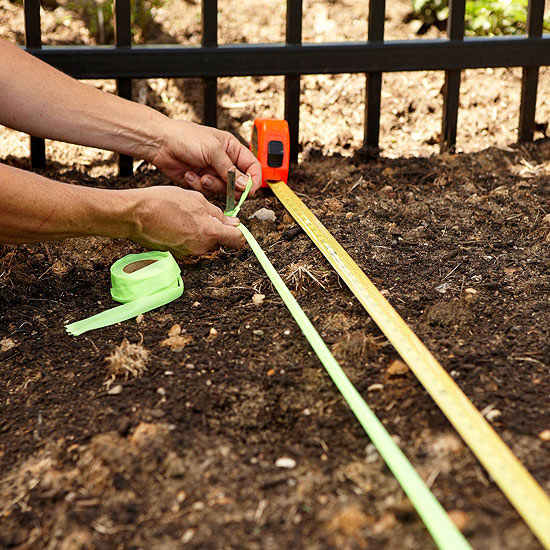
Stake and mark the planting area, whether in a straight line or a curved one. Use a measuring tape as a guide. Be sure to consider underground utilities when selecting the planting location. Avoid planting over utilities if possible.
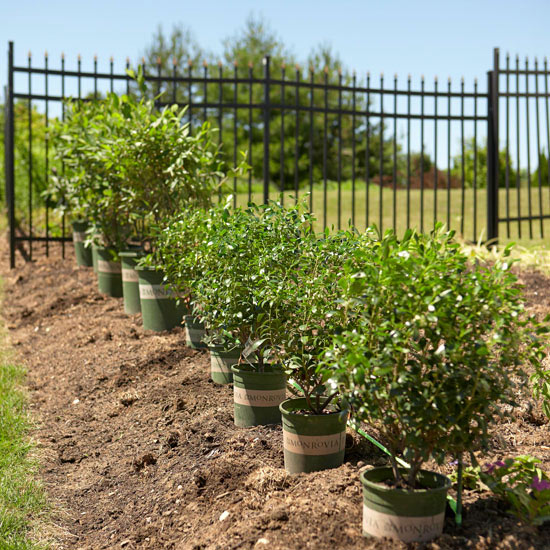
Set potted shrubs in place, allowing room for the plants to reach their mature size. Stagger plants in two rows for a thicker hedge that will fill in more quickly.
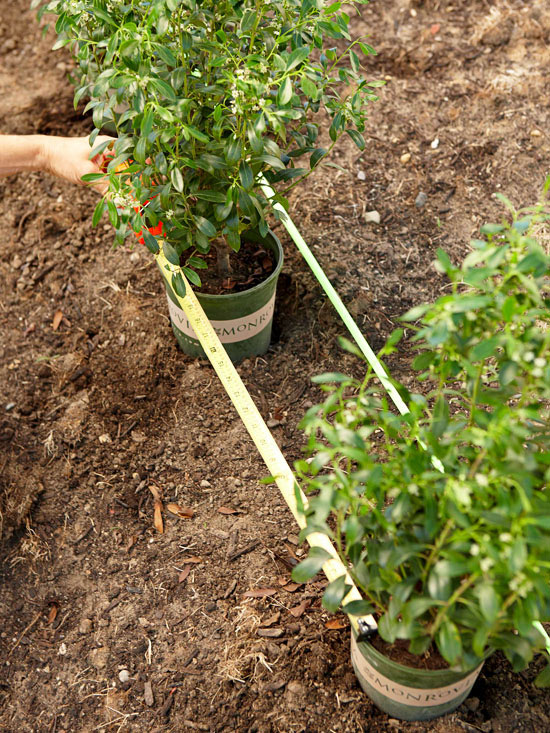
Use the mature width of the shrub as the spacing between the plants' root balls. Use the pots to mark places for planting holes.
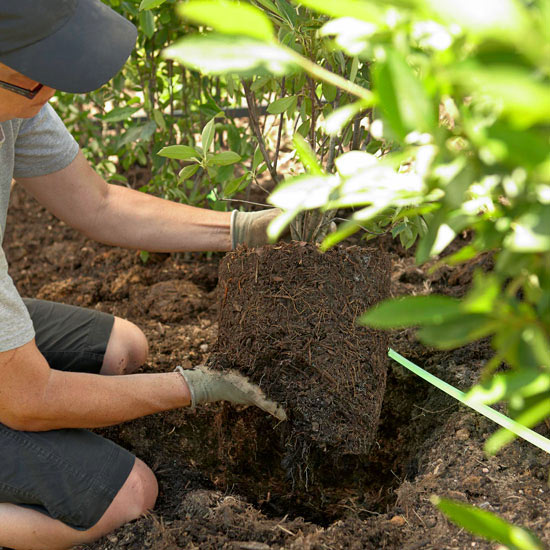
Dig the planting holes. Remove the shrubs from the nursery pots and set them in place. Check the shrubs' spacing; remember to space the shrubs so they can reach their mature spread. Fill in the planting holes.
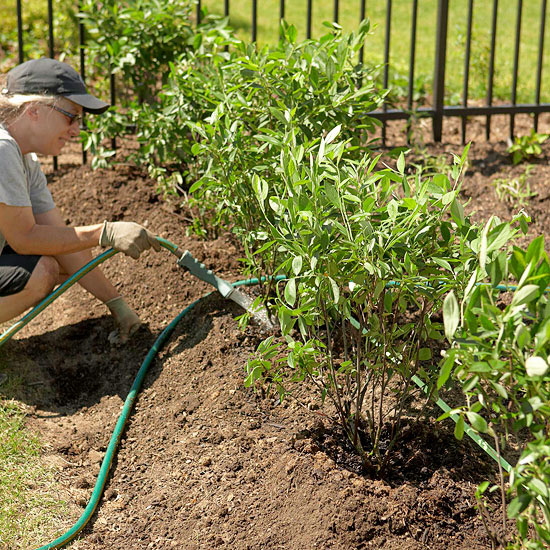
Form a ring of soil around the outer edge of the planting hole to hold water, and then water each shrub thoroughly. Water as needed throughout the first growing season.
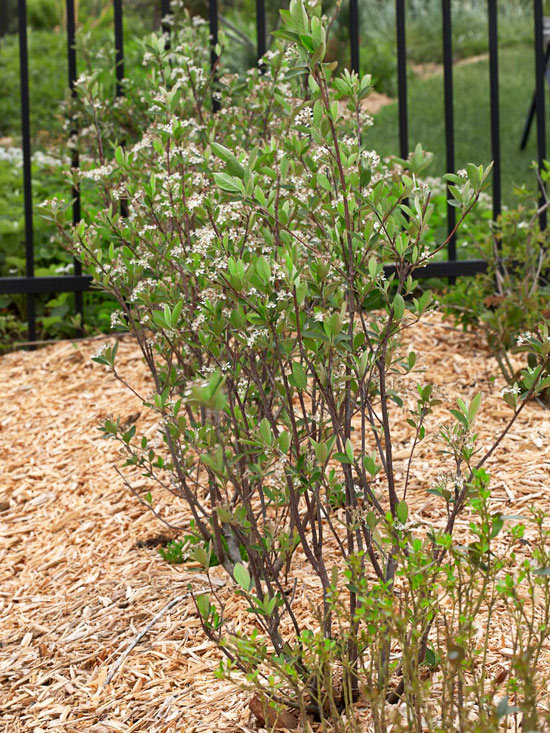
Spread a 2- to 3-inch layer of shredded wood mulch between the plants. Keep the mulch away from the plants' stems to allow water to reach the roots.
Copyright © www.100flowers.win Botanic Garden All Rights Reserved